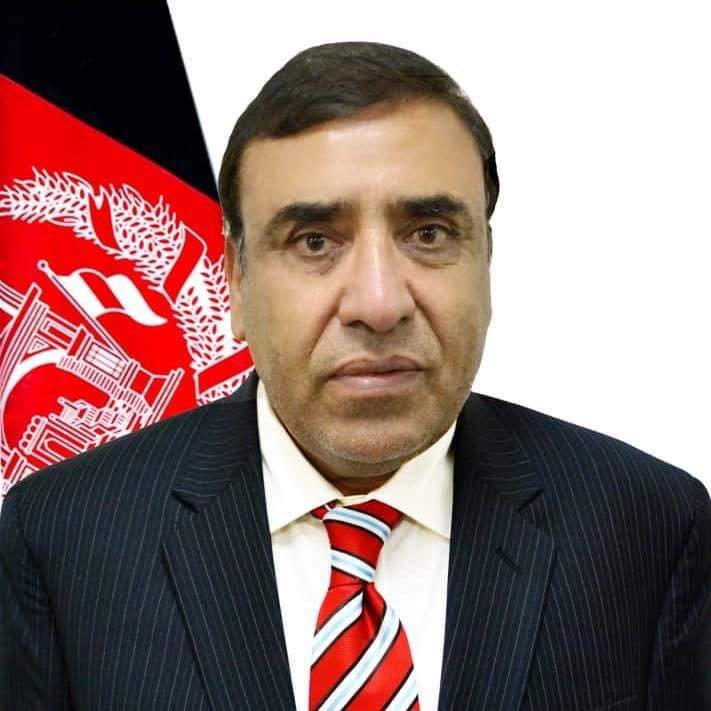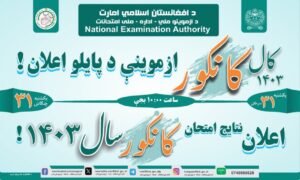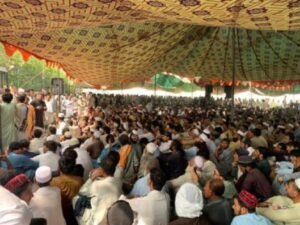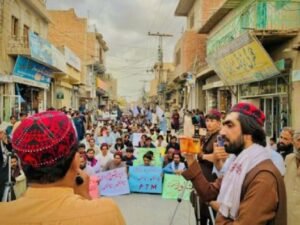Unveiling the Myths and Failures of Afghanistan’s Governance: A Critical Examination

By Shahmahmood Miakhel
Afghanistan is the subject of many myths and misconceptions. Particularly, the last three to four decades have been portrayed as some really broad misinterpretations and understandings of Afghanistan in both academic and outside circles, such as in the media and political debates. Some of the prevalent myths and misconceptions, in my opinion, center on the organization of Afghanistan’s previous government(s), whether centralized forms of government contributed to failures and the reasons why the most recent model of government in Afghanistan failed. The aforementioned issues are the only ones I will discuss in this paper.
Myths No.1: Afghanistan never had a functional government
According to widely held beliefs, Afghanistan is a tribal society where everyone, especially the government, and people, constantly fights amongst themselves and where there has never been a functioning government. My discussions and speeches will be provocative. I challenge these myths.
If you go back in time, Afghanistan had a strong functional system and dynasties, and people like Sultan Mahmood Ghaznavi, the Ghurids, the Suris, and King Ahmad Shah Abdali established laws and rules over the Indian subcontinent, some regions of Central Asia, and Eastern Khurasan. These dynasties left behind complex political structures and histories. Sher Shah Suri was a responsible ruler who established a long-lasting bureaucracy and designed a carefully thought-out taxation system. The relationship between the people and the ruler was established during his Islamic conquests, with little oppression or corruption[1]. One of his other notable accomplishments was the establishment of the Putwari system, a land property management system that is still in use in most rural and some urban areas of the Indian subcontinent.
King Amanullah Khan attempted to have progressive ideas during the modern era. The first Afghan constitutions were drafted and adopted during his rule by the Loya Jirga. At that time, a large number of nations lacked progressive constitutions. His attempt to establish the first functioning, law-based government fell short due to religious extremists. His progressive ideas were misinterpreted by Mullas, who labeled them as unIslamic.
In my lifetime, I have witnessed the Soviet occupation, the 1990s proxy wars, and the War on Terror campaigns, but I have also witnessed peace during the final years of the late King Zahir Shah’s (1933–1973) and President Daud’s (1973–1978) reigns. Afghanistan has a functioning national and local government despite its poverty. With functional central and local government systems, those governments in the past had laid out comprehensive progress and improvements were occurring in all sectors. Due to a merit-based system, the majority of people had the opportunity to receive free education, and many of them rose to high positions of government like prime ministers, ministers, governors, and other senior positions. De Watan Memaran or Memaran-e-Watan, a list of notable Afghan leaders and bureaucrats who attained significant government positions because there was a functional government. Additionally, there was a constitutional monarchy, and the leaders had the political will to give Afghans room to advance and take part in the reconstruction of their nation. (For more information, see Myths and Impact of Bad Governance on Stability in Afghanistan, a chapter from Shanthie Mariet D’Souza’s book Afghanistan in Transition, published in 2012).
Unfortunately, from the time of the Great Games to the Cold War and the War on Terror, Afghanistan has been the target of foreign invasions and occupations. The Afghan proxy wars were the result of the foreign occupiers and our neighbors using divide-and-rule strategies. As a result, the international community and some academics simply refer to the conflict as a war between Afghanistan’s urban and rural areas, implying that the country has never had a functioning government to run it. Those who are well-versed in the district structures and governing principles of Afghanistan will be aware that these are based on democratic principles. Unfortunately, the Afghan people were forced to live under an undemocratic system of government, which has repeatedly backfired. Read my essay, The Importance of Tribal Structures and Pakhtunwali in Afghanistan; Their Role in Security and Governance, for more information.
Myth No. 2: Afghanistan failed because it is a centralized system of government
The world has many different types of governmental structures. Each nation picks and adopts a form of government based on its own realities and dynamics, though occasionally there are outside influences involved. Each form of government has costs associated with it; it is crucial to make the system financially and politically affordable before putting it into place. According to me, the failures of Afghanistan are unrelated to the type of government that was put in place. There are numerous comparisons and examples of both failed and successful governments from around the world. For instance, while Afghanistan’s monarchy failed, the constitutional monarchy in the UK was successful. Although the executive or presidential form of government was unsuccessful in Afghanistan, it was a great success in many other nations. Similar to how a federal system in India was successful, Pakistan’s federal system failed due to Bangladesh’s secession from eastern Pakistan as a separate country. There are still separatist movements and plans to further split Pakistan.
Although the communist system in Vietnam was successful, it was a failure in Afghanistan. In Afghanistan, Egypt, and other nations, the Islamist movement was unsuccessful, but the Malaysian model was successful. Autocratic rule, dictatorships, oligarchs, and other types of governments have all experienced similar ups and downs. The fact remains that each nation’s citizens desire a better quality of life and greater prosperity, and they selected their political structures in accordance with these needs and circumstances.
Afghanistan has endured hardships under every type of regime, despite having previously had functioning governments. Both centralized and decentralized government structures ultimately failed. While various ideologies were employed as a tool to overthrow rulers and bring down various regimes, the primary cause of all of these failures was poor governance by all of the governments and regimes. Even if it meant suppressing the population, the rulers only wanted to consolidate and pass on their power. They created monopolized regimes and suppressed opposition. Due to poor governance, the PDPA communist government fell. The Taliban and Mujahideen were defeated due to poor leadership. The republic also fell apart in August 2021 as a result of poor governance. This is my long-standing position, and I’ve written a lot about these topics. Decision-making, participation, and accountability are all parts of the governance process.
I served as the governor of the vital province of Nangarhar during the previous republic, when it was on the verge of disintegration. The unstable province of Nangarhar was one of the last to fall and be occupied by the Taliban, but by involving and informing the people of our activities, limitations, and decisions, it became stable. Due to our strategic approach, there were notable accomplishments during my one-and-a-half years as governor of Nangarhar because we extended the government model to the district level. We determined that some decisions should be made locally, while others needed to be delegated to the district level. During my tenure, Taliban influence was virtually eliminated and IS-K was vanquished. Out of 22 districts, nearly 21 of them—including the capital city of Jalalabad—became safer for regular citizens and government workers to travel both during the day and at night. We extended the reach of the government to areas where there was little fighting or little loss of life. Warlords or traditional power brokers were forbidden from interfering with provincial affairs. After almost 40 years, the Afghani currency replaced the Pakistani rupee in circulation. More than 1100 small and large projects started as a result of this transformational implementation, which also caused the Afghani currency to stabilize. Additionally, we took effective anti-COVID-19 pandemic measures.
We didn’t receive any additional resources or military support during my time in office, and we didn’t change any laws. Instead, we made the best use of the available resources by bringing together the military and civilian administrations, involving the public in decision-making, and explaining the rationale behind our choices. I granted authority to pertinent provincial and district departments. Delegating responsibility, encouraging and praising the efforts of provincial staff, and informing the public were straightforward management tasks. I put my academic reasoning into action. During these years, I wrote a number of papers to identify the issues and offer some solutions before I was elected governor. You can read my 2010 essay, which was published by the Canadian Center for International Governance and Innovation. You can also read another essay of mine, Lesson from Afghanistan’s Tribal Elders, which explained why people didn’t support the government and how the Taliban’s strength was overstated and was published by Foreign Policy in 2013. International Community Engagement with Local Councils in Afghanistan: Many Shuras Do Not a Government Make. In conclusion, my knowledge of Nangarhar’s human and political geography as well as my understanding of the fundamentals of governance enabled me to make a difference in Nangarhar.
Why the most recent government failed?
Millions of Afghans returned home during the period 2001–2021 and had the chance to take part in the nation’s reconstruction and governance. Due to poor governance and a lack of effective cooperation between the Afghan government and its international backers, this opportunity was lost. The primary cause, as previously mentioned, was once again poor governance. The international community and the Afghan government undermined the very institutions they helped establish. For instance, they spent hundreds of millions of dollars on voter registration and elections in Afghanistan, but in the end, they disregarded the same constitutional and institutional principles and instead tried to rule Afghanistan through a political deal. When President Ghani and Dr. Abdullah Abdullah reached a 50/50 government agreement in 2014 with the help of then-Secretary of State John Kerry, I penned an article in Foreign Policy stating that two kings could not share the Afghan kingdom. When it comes to the reasons why the most recent government failed, many claim that the Afghan government fell apart in ten days, but I contend that the collapse of the republic actually began in the Emergency Loya Jirga of 2002, when the international community once again made a deal with warlords, the acting president, and King Zahir Shah, who had just returned from decades spent living abroad. I stated in a Pashto book that I was a member of the Loya Jirga and that Zalmay Khalilzad had pressured King Zahir Shah not to run for president at the time at the request of the US. The majority of Loya Jirga members agreed that President Karzai should be named Prime Minister and King should be the head of state. The Loya Jirga members are required by the internal rules of the Jirga to give a vote of confidence to the important five ministers of the Interior, Defense, Foreign Affairs, Finance, and Chief Justice. President Karzai quickly announced that he would share the names of the ministers after denying the King’s nomination, and the Loya Jirga adjourned.
Yes, the Ghani government fell in just ten days, but it was overthrown by both foreign pressure and President Karzai, who undermined the rule of law by striking deals and creating parallel institutions. President Ghani also failed as a result of his disregard for governance, management, and leadership principles while making deals in response to internal and external pressures. Many political and governmental figures showed greater loyalty to foreign embassies than to Afghanistan. The peace agreement was used by the exhausted international community as an exit plan from Afghanistan. The government collapsed largely as a result of the pressure to persuade a peace delegation, primarily made up of members of the political elite and not true representatives of the people, to reach an agreement with the Taliban.
Way ahead
Since August 2021, the Taliban have retaken control, but they remain the same, despite earlier claims to the contrary. Taliban lobbyists and even some senior Taliban leadership members in Doha gave the impression that they had changed, but so far, autocratic rule has shown them to have done the opposite. They oppose the involvement of other Afghans in the country’s political system and seek to have a monopoly on power. As a result, the Taliban may find it challenging to rule the nation and will likely experience the same spectacular failure of government in Afghanistan if they refuse to accept a pluralistic government.
Even though the fall of the republic was a major setback for Afghans and the international community, if a legitimate government cannot be established in Afghanistan with the Taliban included, Afghanistan will turn into a focal point for the region, and once again the world will be in danger from extremist elements. Other extremists will be motivated to fight for the establishment of governments with similar characteristics around the world by the atrocities committed by the Taliban. I oppose inclusive governments that divide the pie among the small groups that, ironically, are the primary contributors to the demise of the republic. I am more in favor of an open procedure and creating an equal playing field for all parties to engage in representative government. Only limited engagement for the limited geostrategic goals of each country will have disastrous results for all if the region and the world do not have a unified approach toward Taliban behaviors. Afghans will undoubtedly endure more hardships in the midst of all this unrest. As a result, the international community and the region should encourage meaningful communication between the Taliban and Afghan representative groups and individuals. All parties will benefit from it. All parties have an interest in Afghanistan having a stable and legitimate government, as opposed to the Taliban, which poses a serious threat to everyone.
*Shahmahmood Miakhel served as Governor of Nangarhar Province of Afghanistan (2019-2021), Deputy Minister of Interior in-charge for local governance (2003-20025), First Deputy and Acting Minister of Defense of Afghanistan (July 2020-March 2021). He worked as Country Director of Afghanistan for the United States Institute of Peace (2009-2019), worked as Head/Deputy Head of the Governance department of the United Nations Mission for Afghanistan (UNAMA) and also worked for different NGOs, UNOPS and local reporter for the Voice of America Pashto/Dari services in Peshawar.
Note: The contents of the article are of sole responsibility of the author. Afghan Diaspora Network will not be responsible for any inaccurate or incorrect statement in the article.






